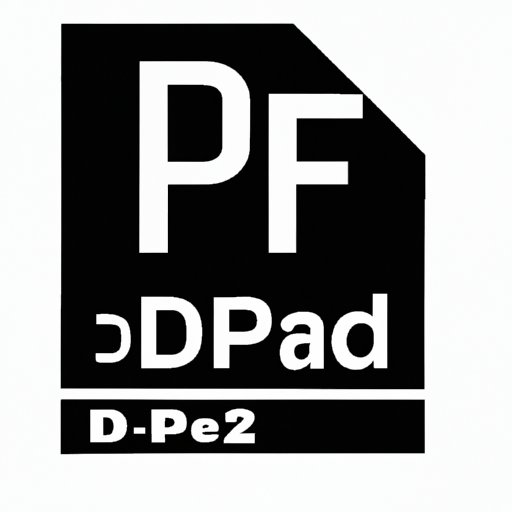Introduction
PDF files are a common way to share documents, but they can quickly become unwieldy and difficult to share if they are too large. In this article, we will explore how to reduce PDF file size through a variety of methods. By optimizing images, using selective fonts, minimizing metadata, splitting large files, and removing unwanted pages, you can make your PDFs more manageable and easy to share.
Optimizing Images
One of the most significant contributors to PDF file size is high-resolution images. While high-quality images can be essential for some documents, they can quickly balloon the file size of a PDF. To reduce the size of your PDF, you must optimize your images.
High-Resolution Images and Their Impact on PDF File Size
When you add high-resolution images to a PDF, they become embedded in the document, and their file size is added to the overall file size of the PDF. This means that the more images you add, and the higher their resolution is, the larger the PDF file will be. As a result, it is crucial to consider the size and quality of the images you use in your document.
Image Optimization using Adobe Acrobat and Online Tools
One way to optimize images is by using Adobe Acrobat’s built-in optimization tool. This tool allows you to adjust the quality and resolution of your images to reduce their file size. You can also use online tools like TinyPNG, which automatically compresses and optimizes your images, reducing their file size without sacrificing quality.
Using Selective Fonts
Fonts can also have a significant impact on the file size of a PDF. A document may contain many fonts, each with its own file size. Selective font embedding is one way to reduce the file size of your PDF.
How Fonts Impact the File Size of a PDF
Fonts can add a considerable amount of data to a PDF. When you use a font in your document, it must be embedded in the PDF file. This means that the more fonts you use, the larger the file size of the PDF will be. Including unnecessary fonts can significantly increase the file size of a PDF, making it difficult to share or upload to the web.
Selective Font Embedding to Reduce File Size
Selective font embedding allows you to embed only the fonts that are necessary for the PDF to display correctly. This can significantly reduce the file size of the PDF. Adobe Acrobat provides several options for selectively embedding fonts, including embedding only the characters used in the document or embedding system fonts that are likely to be available on the reader’s computer.
Minimizing Metadata
Metadata is information about the PDF file that is not visible in the document itself. It can include details such as the author’s name, creation date, modification date, and more. While metadata can be useful, especially when sharing files with others, it can also add to the file size of the PDF.
Metadata and Its Impact on PDF File Size
Metadata can add a considerable amount of data to a PDF file, increasing its file size. While some metadata may be necessary or useful, much of it is not essential and can be removed to reduce the file size of the PDF.
How to Remove Metadata in Acrobat Pro
You can remove metadata from a PDF using Adobe Acrobat. To do so, open the document and select “File” > “Properties.” In the “Description” tab, you can remove any unnecessary metadata, such as the author’s name or keywords.
Splitting Large Files
Sharing large PDF files can be a challenge. Many email clients limit the size of attachments, making it difficult to share large documents. One way to get around this problem is by splitting the document into smaller files.
The Challenges of Sharing Large PDF Files
Large PDF files can be difficult to share through email or other methods. Email clients typically limit the size of attachments, and large files can take a long time to upload or download. This can frustrate users and make it difficult to share documents quickly and efficiently.
Splitting Large PDF Files Using Adobe Acrobat and Online Tools
Adobe Acrobat provides several ways to split a large PDF into smaller files. You can use the “Split Document” tool to create multiple smaller files, or you can extract individual pages and save them as separate documents. Online tools like ILovePDF also offer similar options, allowing you to split a PDF into smaller files without installing additional software.
Removing Unwanted Pages
Finally, another way to reduce the file size of a PDF is by removing unwanted pages. This can include blank pages, pages with no content, or pages that are no longer necessary.
The Benefits of Removing Unnecessary Pages
Removing unnecessary pages can significantly reduce the file size of a PDF. By eliminating blank or unused pages, you can make the document more manageable and easier to share. Additionally, removing pages that are no longer needed can help ensure that readers focus on the critical content of the document and avoid confusion or distraction.
How to Remove Unwanted Pages Using Adobe Acrobat and Online Tools
You can remove unwanted pages from a PDF using Adobe Acrobat by selecting “Tools” > “Pages” > “Delete.” Alternatively, online tools like SmallPDF provide a straightforward and easy-to-use interface for removing pages from a PDF.
Conclusion
Reducing the file size of a PDF can make it easier to share and more manageable for readers. By optimizing images, using selective fonts, minimizing metadata, splitting large files, and removing unwanted pages, you can significantly reduce the file size of your PDF.
